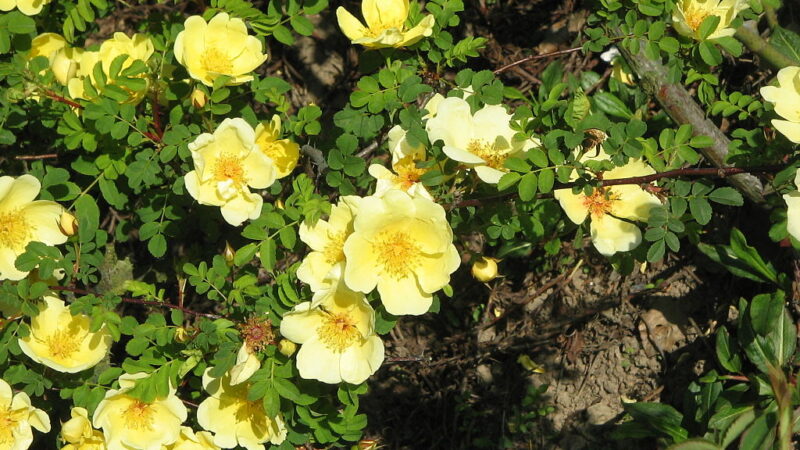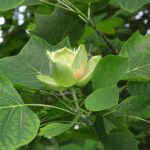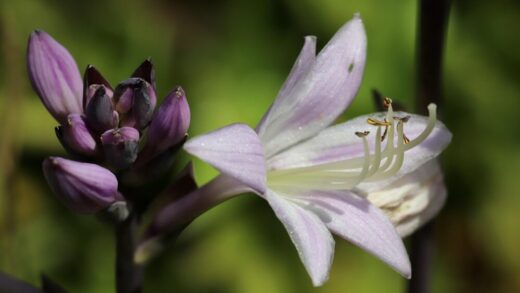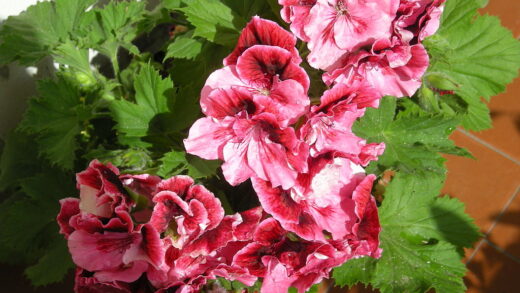Wintering of the golden rose

Successfully guiding the golden rose through the winter is a crucial aspect of its year-round care, ensuring its survival and setting it up for a vigorous return in the spring. While Rosa xanthina is known for its hardiness, the challenges of winter—including freezing temperatures, desiccating winds, and fluctuating conditions—can take a toll on any plant. The process of winterization is not about keeping the plant warm, but rather about insulating it from the most extreme conditions and protecting it from damage. By taking a few key preparatory steps in the autumn, a gardener can provide the necessary protection to safeguard their investment and look forward to another spectacular display of golden blooms when the growing season resumes.
Understanding winter dormancy
Winter dormancy is a natural and essential part of the golden rose’s life cycle. It is a period of rest, similar to sleep, where the plant’s metabolic activities slow down dramatically to conserve energy and survive the cold, harsh conditions of winter. During this time, the plant ceases to produce new leaves, flowers, or significant stem growth. This process is triggered by the decreasing day length and falling temperatures of autumn. The plant gradually hardens off, moving water out of its cells and increasing the concentration of sugars, which acts as a natural antifreeze.
A key part of preparing for dormancy is the cessation of growth. This is why it is critical to stop fertilizing the golden rose in late summer. Late-season feeding can encourage a flush of new, tender growth that will not have time to mature and harden properly before the first hard frosts arrive. This vulnerable new growth is easily damaged or killed by the cold, which can stress the plant and create entry points for disease. Allowing the plant to respond naturally to the changing seasons is the first step in successful winterization.
The visible signs of dormancy include the dropping of leaves after they have changed color, which is a normal process. The plant is withdrawing valuable nutrients from the leaves back into the canes and roots for storage over the winter. The attractive red hips that formed after flowering will often persist on the bare canes, providing a welcome splash of color in the winter landscape and a food source for birds. Understanding that this period of bareness and inactivity is a vital rest phase helps the gardener appreciate the plant’s natural rhythms.
The primary threats to a dormant rose during winter are not just the cold itself, but the combination of cold with other factors. Extreme temperature fluctuations, where the ground repeatedly freezes and thaws, can heave the plant out of the soil and damage its roots. Dry, cold winds can suck the moisture out of the exposed canes, a process known as desiccation. Bright winter sun can also warm the canes during the day, which, when followed by a rapid refreeze at night, can cause the bark to split and crack. Winter protection strategies are designed to mitigate these specific threats.
More articles on this topic
Preparing the plant for the cold
The process of preparing the golden rose for winter begins in the autumn. One of the most important tasks is to ensure the plant enters dormancy in a healthy and well-hydrated state. Continue to water the rose as needed throughout the autumn, especially if rainfall is scarce. A deep, thorough watering after the leaves have dropped but before the ground freezes solid is particularly beneficial. This ensures the roots have adequate moisture to sustain the plant through the winter months.
Autumn is also the time for a thorough cleanup around the base of the plant. Rake up and remove all fallen leaves, twigs, and other garden debris. This act of sanitation is crucial because many fungal spores, such as those that cause black spot, can overwinter in this debris. Removing it from the garden reduces the source of potential infections for the following spring. This simple step can significantly improve the health of the rose in the next growing season.
A common question is whether to prune the golden rose in the fall. For a hardy shrub like Rosa xanthina, major pruning should be avoided at this time. Pruning can stimulate new growth, which is the opposite of what is desired heading into winter. However, it can be beneficial to do a very minimal trim to shorten any exceptionally long, whippy canes that could be damaged or broken by heavy snow or wind. Any significant structural pruning should be saved for late winter or early spring, just before the new season’s growth begins.
Finally, it is important to stop deadheading the rose in late summer. Allowing the flowers to fade naturally and form hips sends a signal to the plant that the growing season is coming to an end and it is time to start preparing for dormancy. The development of hips is part of the natural hardening-off process. For the golden rose, these hips are also an attractive ornamental feature, so leaving them on the plant allows you to enjoy their winter beauty.
Techniques for winter protection
Once the plant has entered dormancy and the ground has experienced a few hard frosts, it is time to apply winter protection. The goal is to insulate the base of the plant and its roots from extreme temperature fluctuations. The most effective method for this is to mound insulating material around the crown of the plant. A loose, airy material is best, such as shredded leaves, straw, compost, or pine boughs. Avoid using heavy, wet materials that could compact and hold too much moisture against the canes.
Apply a generous mound of this material, about 10 to 12 inches high and extending out about a foot from the center of the plant. This layer of insulation helps to keep the ground temperature more stable, preventing the damaging freeze-thaw cycles that can injure the roots. It is important to wait until after the ground has started to freeze before applying this mound. If you apply it too early when the ground is still warm, it can trap heat and delay dormancy, or even provide a cozy winter home for rodents that might gnaw on the canes.
In areas with very harsh winter winds or strong winter sun, providing protection for the exposed canes can also be beneficial. This helps to prevent desiccation and sunscald. A simple way to do this is to create a screen or barrier using burlap. You can drive stakes into the ground around the rose and wrap the burlap around the stakes, creating a protective enclosure. It is not necessary to wrap the burlap tightly against the plant itself; a loose screen that breaks the force of the wind is sufficient.
For gardeners in regions where snow cover is reliable, the snow itself provides an excellent natural layer of insulation. A deep blanket of snow protects the base of the plant and the lower canes from wind and extreme cold. The artificial protection methods are most critical in climates that experience cold temperatures without the benefit of consistent snow cover throughout the winter.
Spring revival and care
As winter begins to recede and spring approaches, it is time to think about removing the winter protection. The timing of this is important. Removing the protection too early can expose the plant to damage from a late hard frost. Leaving it on for too long, however, can trap moisture and heat as the weather warms, which can promote fungal diseases and cause the plant to break dormancy prematurely. The best time to remove the mulch is typically when the threat of prolonged, deep freezes has passed, often around the same time that you would do your main spring pruning.
Begin by gently pulling the mounded insulation material away from the crown of the plant. Be careful not to damage any emerging buds or new shoots that may be starting to swell on the lower canes. This material does not need to be removed from the garden; it can be spread around the base of the rose as a light layer of mulch or incorporated into the surrounding soil to add valuable organic matter. Any burlap screens or wraps should also be removed at this time to allow for good air circulation around the plant.
The removal of winter protection is the perfect opportunity to inspect the plant for any damage that may have occurred over the winter. Look for any canes that are broken, shriveled, or show signs of dieback (canes that are brown or black instead of green). This is also the ideal time to perform the main structural pruning for the year. Prune out all of the winter-damaged wood, cutting back to a point where the pith inside the cane is healthy and white or light green.
Once the winter protection is removed and the spring pruning is complete, the golden rose is ready to begin its new growth cycle. This is the time to apply the first dose of fertilizer for the season to provide the nutrients it needs for vigorous growth. As the soil warms and the buds begin to break, the plant will rapidly come back to life, rewarding the gardener’s winter care with the promise of another stunning display of golden yellow flowers.
📷 Meneerke bloem, CC BY-SA 3.0, via Wikimedia Commons

















